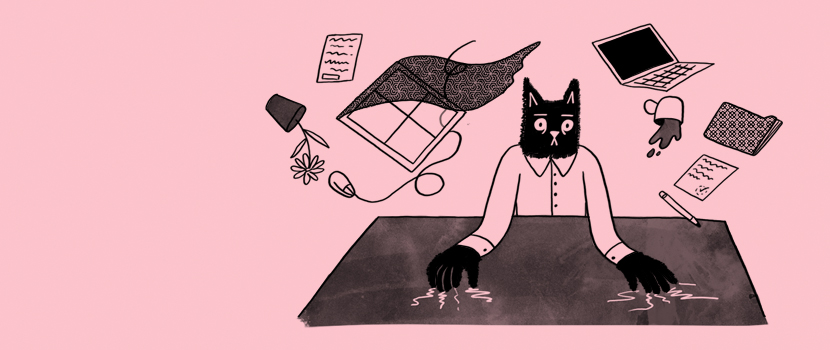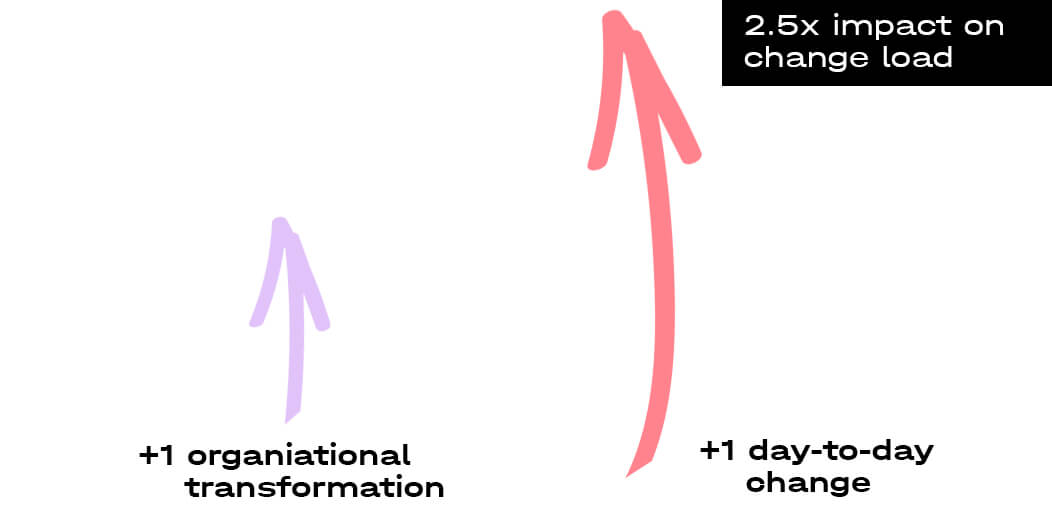Tired of constant change and a lack of skills – according to a survey by the European Center for Creative Leadership, these are the two reasons that most hinder top managers from developing their businesses. This has been the case before, but now, when businesses have to rebuild on the fly because of the war, the problem has become particularly acute.
People who have not yet had time to recover from the stress and changes associated with the pandemic are finding it increasingly difficult to cope with the new transformations. We figure out how to play the long game and keep the team together when “everything is rushing” around.

Why there is fatigue from constant change
The term Change Fatigue was first mentioned in earnest after the pandemic-when businesses were forced to rebuild their operations literally “on the fly.”
Ann Maston, Ph.D., of the University of Minnesota, believes that everyone’s psyche contains a certain “surge reserve”-an untouchable reserve of strength for a rainy day. In standard circumstances, when stress is a one-time event, we can rely on these reserves to survive sudden, short-term changes. But such a mechanism is not suited to the long game.
When there is no end in sight to stressful situations, and no respite is planned, resources simply have no time or place to replenish themselves. Consequently, adaptive functions also decline. According to Gartner, the ability of employees to cope with change fell by 50% in the first post-cohort year.
According to Jessica Knight, vice president of Gartner, the sharp decline came at exactly the time when companies needed a transformation to reboot.
Pauline Boss, Ph.D., of the University of Minnesota, believes it was due to a disruption in routine. Conditions of prolonged stress and constant uncertainty are the worst time to achieve goals, she says. The more accustomed a person is to routine and standard tasks, the harder it is for him or her to adapt to a situation where the habitual pattern is disrupted. At this point, feelings of hopelessness and helplessness enter the scene.
Gartner found out that the scale of innovations also plays a role – small changes that affect routine, undermine the psyche more seriously than something grandiose. Thus, it turned out that the transition to another team or the appointment of a new manager affects employees almost 3 times more than global changes – the merger of departments, companies or change of ownership of the business.

According to Prosci’s research, specialists in areas such as customer service, operations, sales and HR experience changes more difficult than their colleagues in other areas.
This especially affects HR departments, because they are most often responsible for innovations and feel their effects first of all. Accordingly, the cumulative effect of constant changes will be greater than in other divisions of the company.
How to Detect Exhaustion from Changes: Symptoms and Signs
The ADKAR model can be used to analyze employee mood and fatigue levels. This is an acronym for the 5 key outcomes that a person must achieve in order to change successfully: Awareness, Desire, Knowledge, Ability, and Reinforcement.
According to this methodology, human resource managers and executives should pay attention to:
- noise – more frequent and louder complaints about the changes
- apathy – growing indifference to changes in the project, detachment; employees
- stop asking questions
- burnout – people are clearly tired
- stress – the team is worried about change and its consequences
- Resistance – some people push back the innovation with more energy, while
- others don’t protest at all
- negativity – cynicism and pessimism prevail
- skepticism – the team expresses doubts about the success of the changes
By capturing such sentiments when communicating with employees, a manager will be able to notice change fatigue in time and have the opportunity to deal with it.
However, if the alarm bells are left unchecked, exhaustion can:
- spread quickly to other colleagues
- Create a toxic work environment
- lead to the loss of employees – even experienced and valuable ones
How to reduce team fatigue from change
Gartner analyzed data from more than 4,000 employees by level, field, region – and found two key points that allowed people to go through turbulence mode with less stress.
#1 Trust. The team needs to see that key people in the company – manager, colleagues, department heads, CEOs – are engaged and adhering to the innovation plan. In addition, the team needs to understand exactly what is happening, why the company and each employee need it.
Trust in this case means the following: the team member believes that the executives, managers, and HR:
- take into account the interests of the employee
- Consider the impact the change will have
- Clarify slippery and unclear points
- Keeps their promises
Where a person has low trust, his ability to change is cut in half. And that’s not all. Teams with high levels of trust and openness in management are, on average, 2.6 times better at surviving transformation.

#2 Cohesion. The well-worked and cohesive have 1.8 times the ability to change than employees with low levels of internal communication.
How to reduce the stress of innovation
- Prioritize change initiatives. Reduce team stress and fatigue by limiting the number of simultaneous innovations. Any change, both positive and negative, is stressful for employees. Prioritize and focus on the transformations that will have the greatest impact on the business and team first – but implement them gradually.
- Regular feedback. Gather feedback from the team at regular rallies and one-to-one meetings – take notes, adjusting plans. Involved employees will feel more valued and will accept changes more easily. It’s also worth sharing interim results with the team – this will give people a greater sense of confidence.
- Pause to live through the next transformation. The psyche’s first reaction to a stressful change is “hit or run.” Faced with anxiety, we tend to drive ourselves to exhaustion in search of an immediate resolution to the situation. So before you rush to implement the next change, take a breath.
- Make a plan from which you will deviate. Our brains love to find patterns-it makes the psyche feel stable. Faced with a known problem (for example, filling out a quarterly report), the employee remembers how he/she solved it last time – and the brain along the beaten path suggests a solution. Uncertainty disrupts such a mechanism – it’s associated with the need to expend additional resources.
Dr. Laura Gallagher advises reducing anxiety by making a plan of action – and accepting in advance for yourself the fact that you will deviate from it. The benefit of planning is that the brain gains confidence. The value is in the process itself, which helps structure thoughts and calm the brain, not in the specific agenda. Think of plans as confidence in your own willingness to face what comes next.